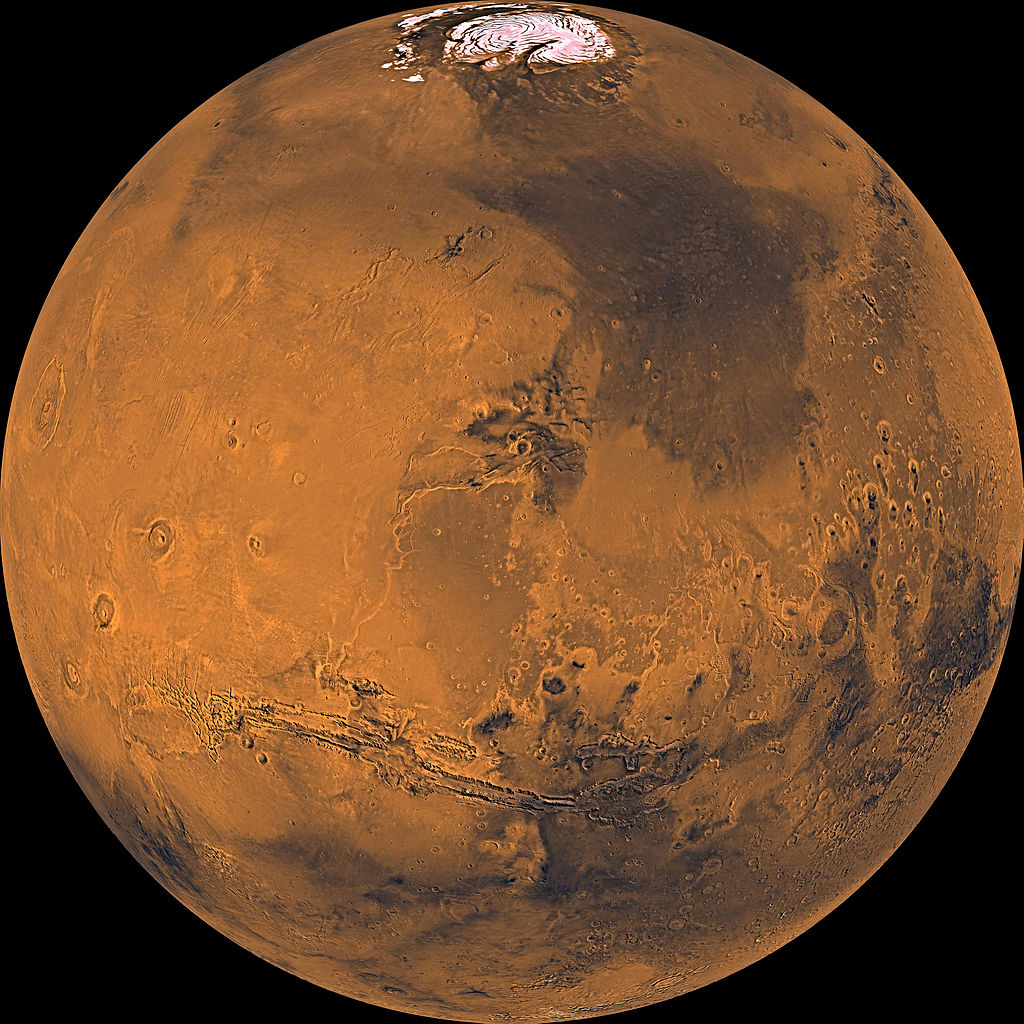
NASA will reveal a "major science finding" about Mars on Monday morning (Sept. 28), and you can follow the announcement live.
Researchers and NASA officials will unveil the discovery — which the agency described in a media advisory as a "Mars mystery solved" — during a press conference Monday at 11:30 a.m. EDT (1530 GMT). You can watch the Mars announcement live on Space.com, courtesy of NASA TV.
Participating in Monday morning's event are:
- Jim Green, director of planetary science at NASA Headquarters
- Michael Meyer, lead scientist for the Mars Exploration Program at NASA Headquarters
- Lujendra Ojha of the Georgia Institute of Technology in Atlanta
- Mary Beth Wilhelm of NASA’s Ames Research Center in Moffett Field, California and the Georgia Institute of Technology
- Alfred McEwen of the University of Arizona in Tucson, principal investigator for the High Resolution Imaging Science Experiment (HiRISE) aboard NASA's Mars Reconnaissance Orbiter (MRO) spacecraft
NASA currently operates five spacecraft around and on Mars — the rovers Opportunity and Curiosity, which landed in 2004 and 2012, respectively, and the orbiters Mars Odyssey, MRO and MAVEN (which stands for Mars Environment and Volatile Evolution).
Mars Odyssey arrived at the Red Planet in 2001, and MRO got there in 2006. MAVEN just celebrated its one-year anniversary in Mars orbit last week.
Europe's Mars Express spacecraft and India's Mars Orbiter Mission probe are also still eyeing the Red Planet from above, bringing the number of currently functional Mars orbiters to five.
MRO's HiRISE camera features a telescopic lens that can pick out features as small as 3.3 feet (1 meter) across on the Martian surface. The camera also collects images in near-infrared wavelengths, allowing researchers to learn about the mineralogy of Mars.
Get the Space.com Newsletter
Breaking space news, the latest updates on rocket launches, skywatching events and more!
"These new, high-resolution images are providing unprecedented views of layered materials, gullies, channels, and other science targets, in addition to characterizing possible future landing sites," NASA officials wrote in a description of the HiRISE instrument.
Follow Mike Wall on Twitter @michaeldwall and Google+. Follow us @Spacedotcom, Facebook or Google+. Originally published on Space.com.
Join our Space Forums to keep talking space on the latest missions, night sky and more! And if you have a news tip, correction or comment, let us know at: community@space.com.

Michael Wall is a Senior Space Writer with Space.com and joined the team in 2010. He primarily covers exoplanets, spaceflight and military space, but has been known to dabble in the space art beat. His book about the search for alien life, "Out There," was published on Nov. 13, 2018. Before becoming a science writer, Michael worked as a herpetologist and wildlife biologist. He has a Ph.D. in evolutionary biology from the University of Sydney, Australia, a bachelor's degree from the University of Arizona, and a graduate certificate in science writing from the University of California, Santa Cruz. To find out what his latest project is, you can follow Michael on Twitter.









